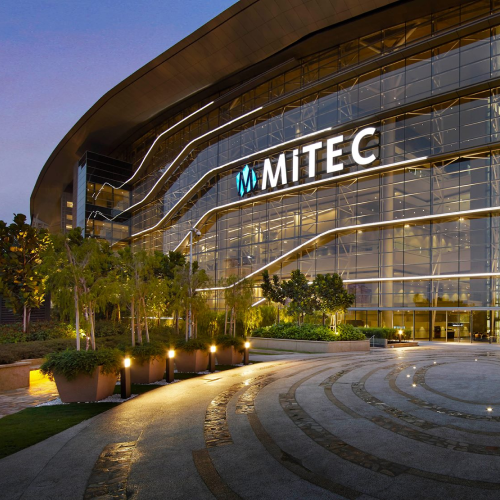The world is on the brink of a dramatic shift. In the next decade, the forces of automation and artificial intelligence will irrevocably alter the landscape of work. As these technologies evolve, they will not only redefine the nature of jobs but also reshape how we think about work itself. By 2035, the workforce we know today will look vastly different, and with this transformation comes both incredible opportunities and daunting challenges. But where exactly could we be in 2035? What will work look like, and how can we prepare for it?
A New Era of Opportunity In an optimistic scenario, we experience a new era of opportunity where governments, businesses, and workers collectively embrace the future. Governments reform education, businesses embed lifelong learning, and workers adapt to hybrid, digitally augmented roles. Job quality improves, and the skills gap narrows. The World Economic Forum predicts a net increase of 78 million jobs by 2030, with roles in AI, data analytics, and machine learning leading the way.
A report by PwC highlights that industries most adept at integrating AI have experienced a threefold increase in revenue per employee, underscoring the potential of AI to enhance productivity and create value. Furthermore, the demand for AI-skilled workers has led to a 56% wage premium for roles such as prompt engineering, indicating the premium placed on these competencies.
In this future, workers continuously upskill to meet industry demands, and the education system aligns closely with the evolving digital economy. The divide between high and low skill workers shrink, fostering a more inclusive and prosperous global workforce.

Alternatively, a more concerning trajectory involves a widening skills divide. While large corporations and tech-savvy individuals thrive, small and medium-sized enterprises (SMEs) and less digitally literate workers lag behind. This disparity can lead to a bifurcated labor market, where high-skill, high-wage jobs are abundant, but low-skill, low-wage opportunities diminish.
Deloitte’s 2025 Global Human Capital Trends report indicates that 73% of executives and 72% of workers agree that organisations should do more to connect their workforce with opportunities to build experience, suggesting a gap between current initiatives and the needs of the workforce. This unsettling scenario risks leaving a significant portion of the population underprepared for the demands of the future economy, exacerbating inequality and social unrest.

In the most dystopian scenario, rapid automation outpaces human adaptation. AI and robotics replace jobs across various sectors, including retail, logistics, and customer service. While some organisations invest in reskilling programs, these efforts are often insufficient and misaligned with the evolving needs of the workforce.
The pace of skill change in AI-exposed jobs is accelerating, with a 66% faster rate compared to jobs less impacted by AI, emphasising the urgency for rapid upskilling. Without timely and effective interventions, millions may find themselves displaced, leading to widespread economic instability and social fragmentation.
As we look ahead to 2035, the key to thriving in the future workforce lies in proactive adaptation. For individuals, the focus must be on continuous learning and adaptability, ensuring that skills remain aligned with technological advancements. This involves not only technical expertise in emerging fields like Ai and data analytics but also the development of soft skills–creativity, problem-solving, and collaboration, attributes that machines cannot replicate. Workers who embrace this mindset will be better prepared for the challenges ahead, securing their place in a rapidly changing economy.
For organisations, embracing a culture of innovation and ongoing workforce development is crucial. This means investing in reskilling programs, fostering an agile and collaborative work environment, and prioritising the human aspects of business that AI can’t replace. Governments and educational institutions also play a pivotal role by creating accessible, future-proof education systems that align with the needs of the digital economy. By facilitating partnerships between the private sector and academia, we can ensure that learning opportunities are available to all, particularly those at risk of being left behind in the transformation.
In the end, navigating the future is a collective effort. Governments, businesses, and workers must collaborate to create an inclusive, resilient workforce capable of adapting to technological shifts. By acting now with urgency and foresight, we can build a future where opportunity is not just for the few, but accessible to all, ensuring that the workforce of 2035 is the one that thrives through innovation, adaptability, and collaboration.
Build a Future Team aggregates a legion of business, impact, and skill partners to establish a new benchmark for social impact in the digital era across Southeast Asia. We are poised to impact 10 million lives through digital workforce transformation.

Lorem ipsum dolor sit amet, consectetur adipiscing elit. Ut elit tellus, luctus nec ullamcorper mattis, pulvinar dapibus leo.

Lorem ipsum dolor sit amet, consectetur adipiscing elit. Ut elit tellus, luctus nec ullamcorper mattis, pulvinar dapibus leo.

Lorem ipsum dolor sit amet, consectetur adipiscing elit. Ut elit tellus, luctus nec ullamcorper mattis, pulvinar dapibus leo.

Lorem ipsum dolor sit amet, consectetur adipiscing elit. Ut elit tellus, luctus nec ullamcorper mattis, pulvinar dapibus leo.

Lorem ipsum dolor sit amet, consectetur adipiscing elit. Ut elit tellus, luctus nec ullamcorper mattis, pulvinar dapibus leo.

Lorem ipsum dolor sit amet, consectetur adipiscing elit. Ut elit tellus, luctus nec ullamcorper mattis, pulvinar dapibus leo.

Lorem ipsum dolor sit amet, consectetur adipiscing elit. Ut elit tellus, luctus nec ullamcorper mattis, pulvinar dapibus leo.

Kompleks MITEC KL Metropolis,
8, Jalan Dutamas 2,
Segambut, 50480 Kuala Lumpur,
Wilayah Persekutuan Kuala Lumpur